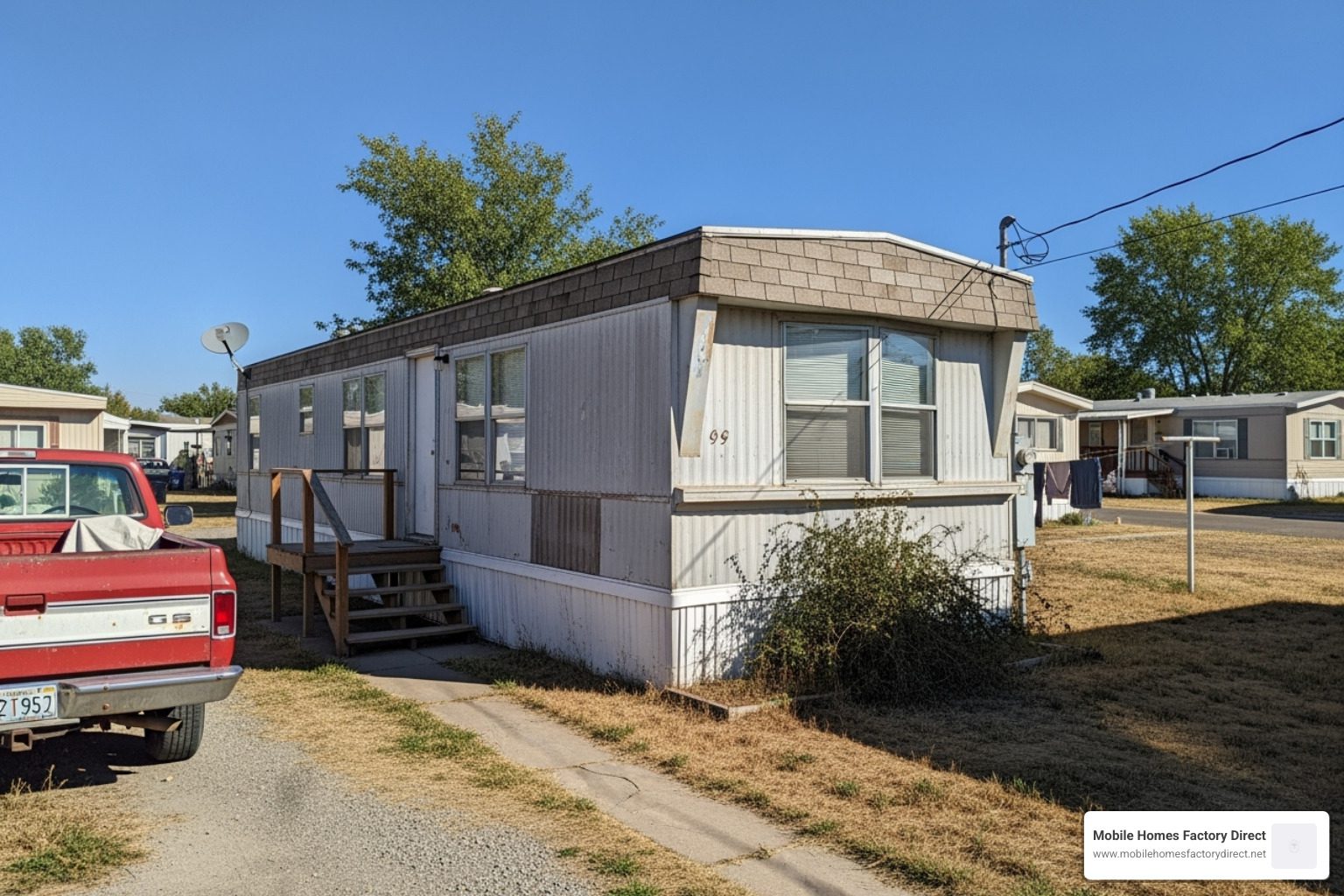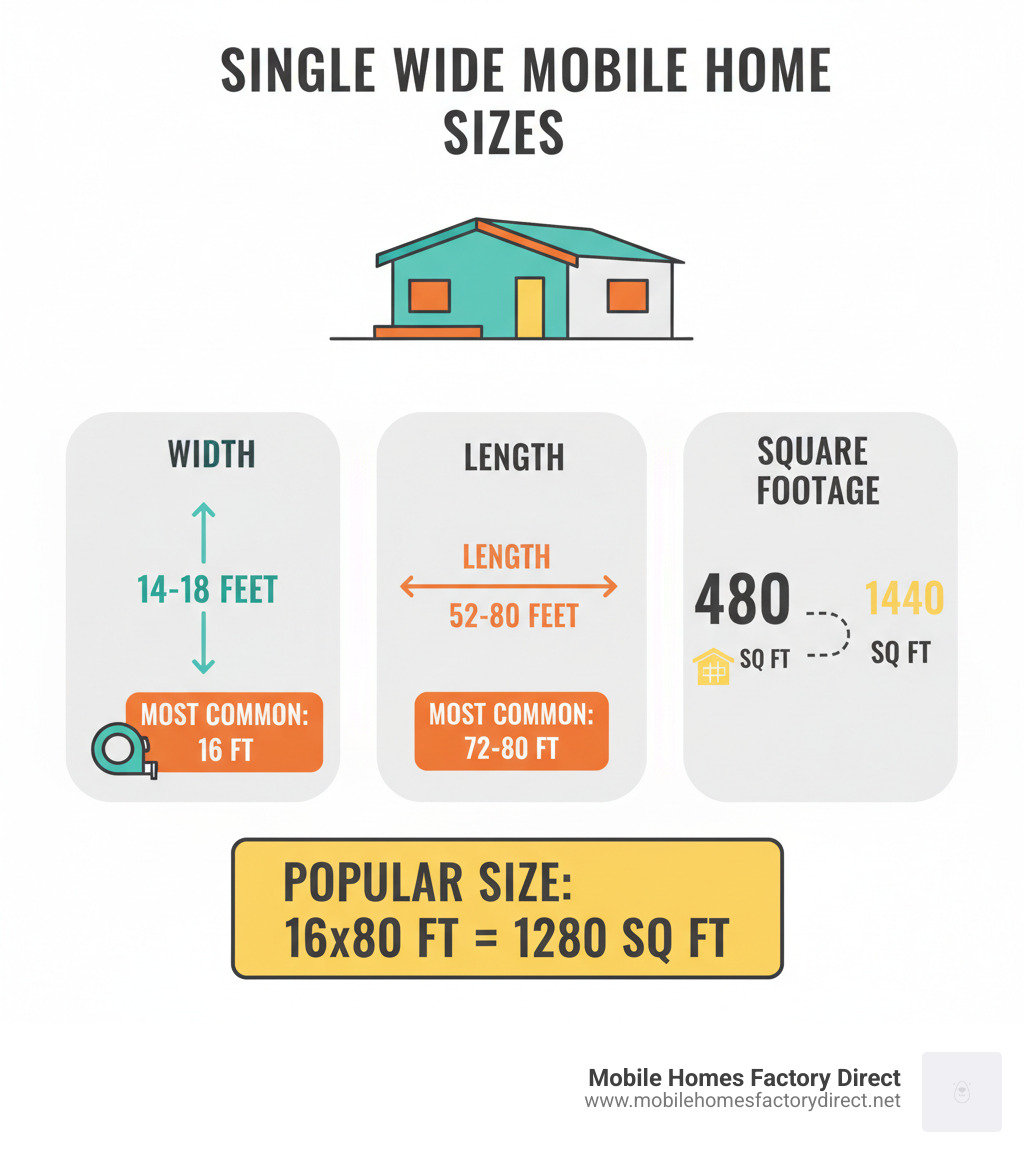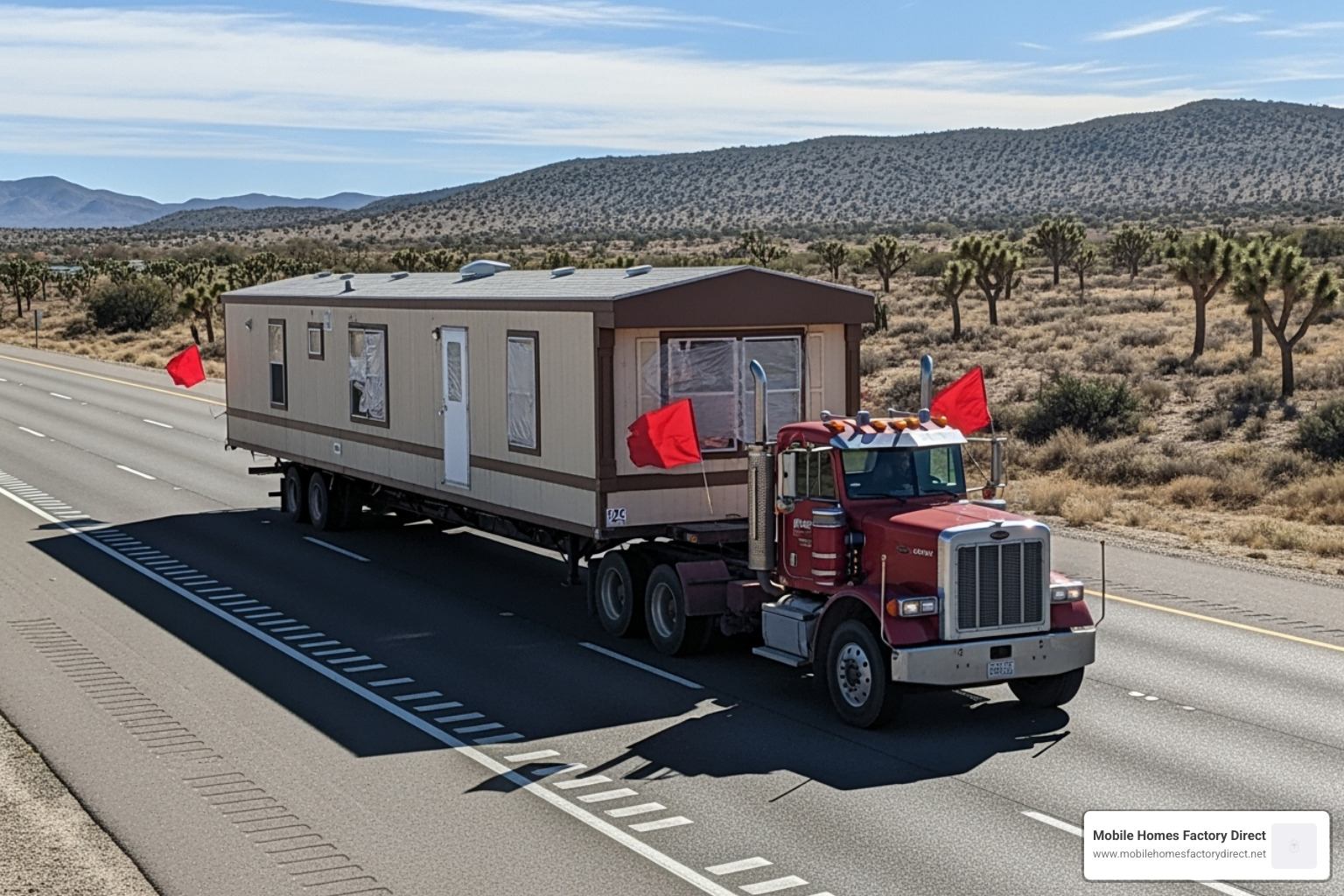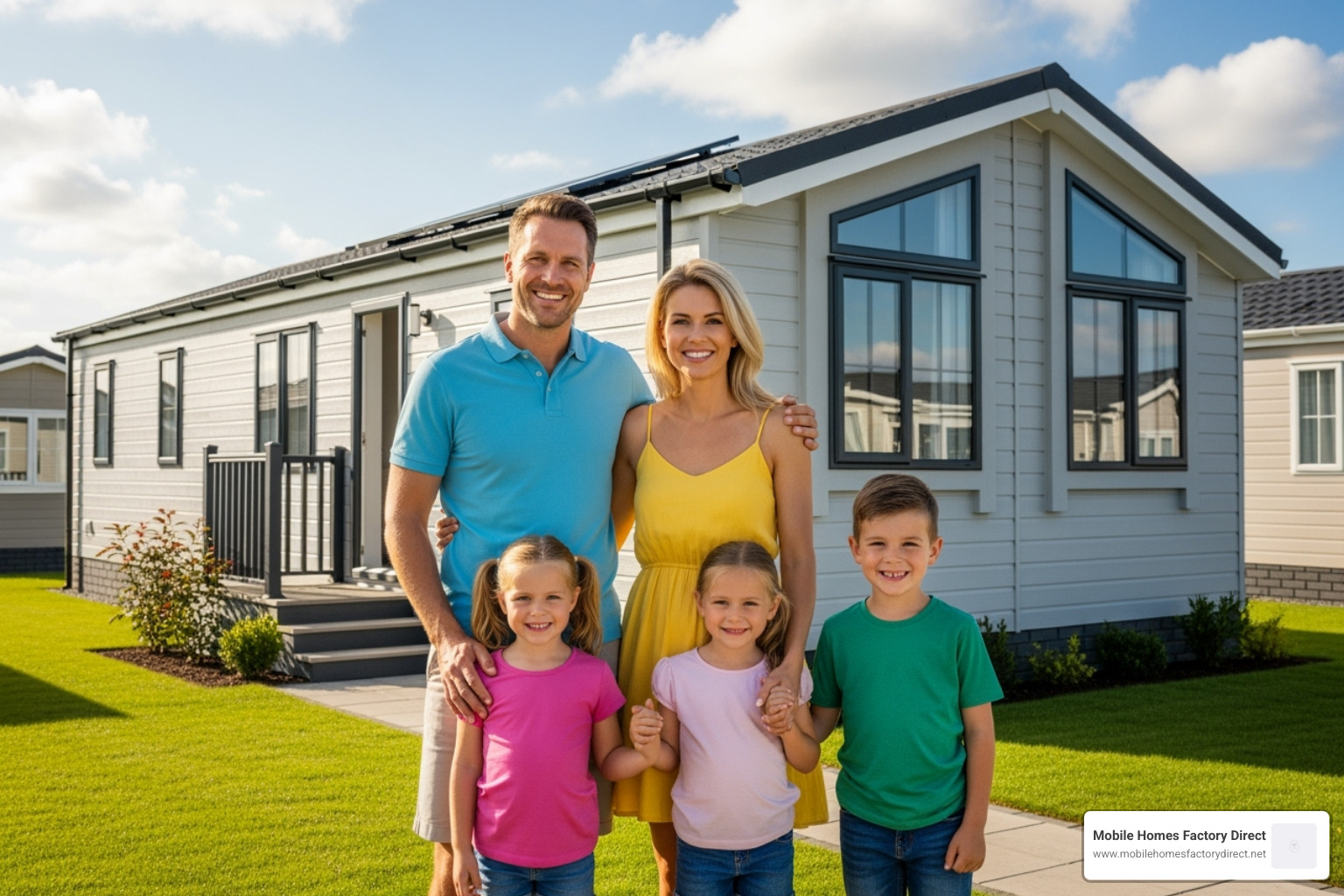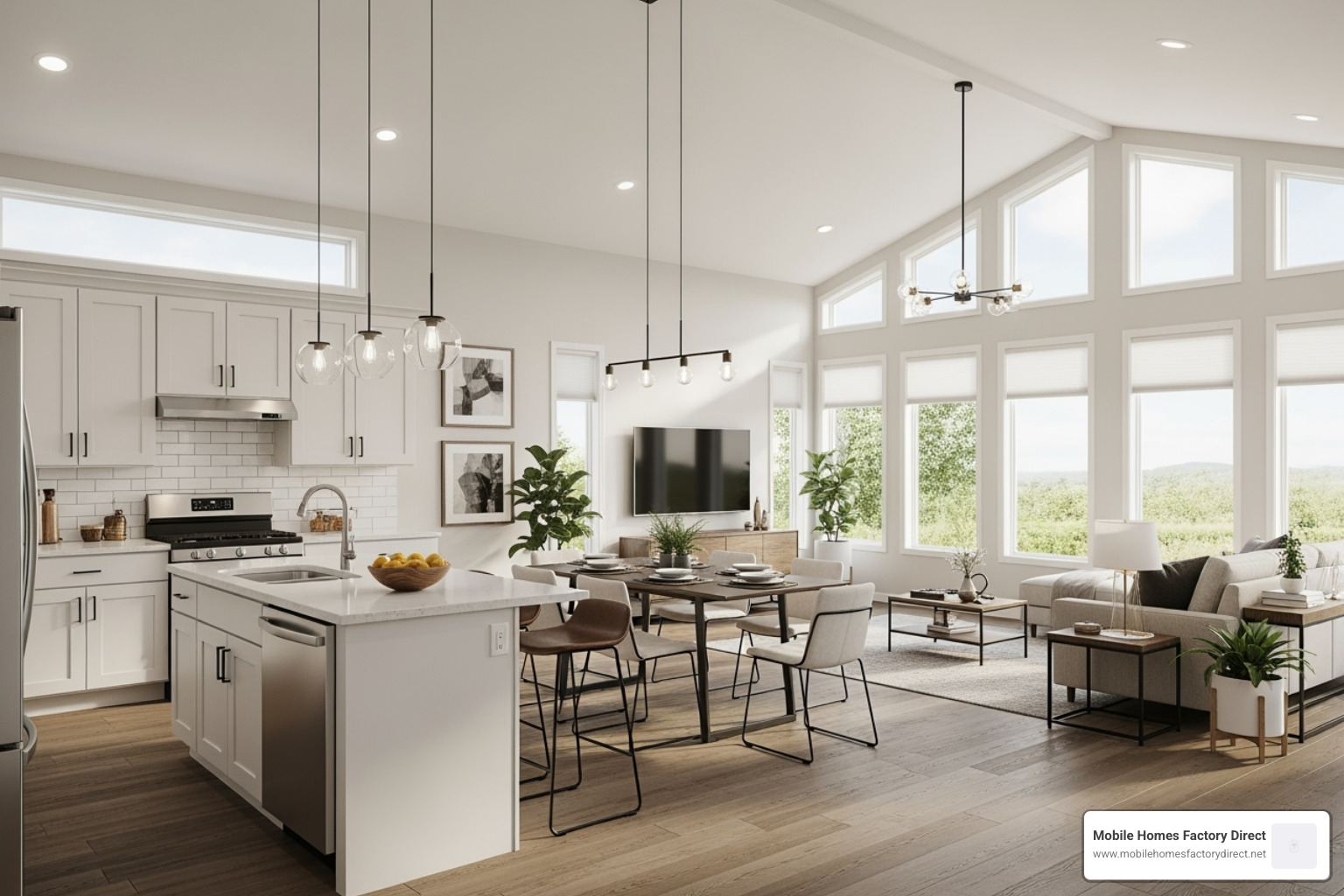How Big Are Single Wide Mobile Homes? A Comprehensive Size Breakdown
Explore standard single wide mobile home sizes, pros, cons, and factors impacting dimensions. Find your ideal manufactured home fit!
Why Understanding Single Wide Mobile Home Sizes Matters
Single wide mobile home sizes typically range from 14-18 feet wide and 52-80 feet long, offering between 480-1,440 square feet of living space. Here’s what you need to know:
Standard Single Wide Dimensions:
- Width: 14-18 feet (most common: 16 feet)
- Length: 52-80 feet (most common: 72-80 feet)
- Square Footage: 480-1,440 sq ft
- Popular Size: 16×80 feet (1,280 sq ft)
If you’re considering affordable homeownership, understanding these dimensions is crucial, as the size you choose affects everything from your budget to where you can place your home.
Single wide homes offer three main size categories. Small models around 700 square feet work great for singles or couples. Mid-size options near 1,000 square feet suit small families perfectly. Large single wides over 1,200 square feet provide space for bigger families or home offices.
Your choice impacts more than just living space. Smaller homes cost less upfront and require smaller lots, while larger models offer better resale value. State transportation laws also limit maximum sizes—most states cap single wides at 18 feet wide due to highway restrictions.
Understanding Standard Single Wide Mobile Home Sizes
When you’re exploring single wide mobile home sizes, you’re looking at homes built as one complete section in a factory. This design makes them affordable and practical but also limits their dimensions. Most are 14 to 18 feet wide (16 feet is most popular) and 52 to 80 feet long, offering 480 to 1,440 square feet of living space.
The 16×80 configuration is a favorite, providing 1,280 square feet—a great balance of space and transportability. Width restrictions are based on highway safety laws, with most states capping single wides at 18 feet. Transporting wider homes gets tricky and requires special permits. To see how single wides compare to other options, check out our guide on Types Of Mobile Homes.
Small Single Wides
Small single wide mobile home sizes pack a lot of living into a compact footprint, typically measuring 14 feet wide by 52 feet long for around 700 square feet. Some models are even smaller, down to 400-600 square feet. These homes are thoughtfully designed with 1-2 bedrooms, making them perfect for singles, couples, or those downsizing. They are popular as vacation homes or for anyone seeking to simplify their life and reduce expenses. A key advantage is their easy transportation and ability to fit on smaller lots, giving you more placement flexibility.
Mid-Size Single Wides
Mid-size single wide mobile home sizes are the most popular choice, offering a great balance of space and cost. At 16 feet wide by 66 feet long, they provide approximately 1,000 square feet. With 2-3 bedrooms, they are ideal for small families. The extra width makes a noticeable difference in how open the home feels. The 16×80 configuration is a gold standard, maximizing living space at 1,280 square feet while remaining easy to transport. First-time homebuyers find them a significant step up from apartment living, offering more space and privacy at an affordable price.
Large Single Wides
Large single wide mobile home sizes push the limits of single-section homes, measuring 18 feet wide and up to 80 feet long for 1,200+ square feet of space. The extra width allows for truly open floor plans with kitchen islands and spacious living areas that don’t feel like a hallway. With 3 or more bedrooms, they suit larger families and provide room for home offices or flex spaces. These homes feel more like traditional site-built homes, eliminating the narrow “mobile home” feeling. The trade-off is higher cost and complexity, as they require bigger lots and are more expensive to transport, but they offer incredible value for families who need the space.
Pros and Cons of Different Single Wide Mobile Home Sizes
Choosing a single wide mobile home size is a personal decision based on your lifestyle. Each size category has unique pros and cons that will shape your daily life. Smaller homes are efficient and affordable, while larger homes offer more space and features.
| Size Category | Cost (Purchase) | Space | Portability | Resale Value |
|---|---|---|---|---|
| Small | Lower | Limited | High | Lower |
| Mid-Size | Moderate | Balanced | Moderate | Moderate |
| Large | Higher | Ample | Lower | Higher |
Advantages and Disadvantages of Smaller Homes
Small single wides (around 700 sq ft) offer significant value but aren’t for everyone.
Pros: Their lower purchase price provides an affordable path to homeownership. They are easier and cheaper to transport and require smaller lots, saving on land costs. You’ll also enjoy lower utility bills due to the smaller space.
Cons: The main drawback is limited living and storage space, which can feel cramped. The narrow width can create a “hallway effect” in the layout. They also tend to have a lower resale value due to a smaller potential market.
Advantages and Disadvantages of Larger Homes
Larger single wides (over 1,200 sq ft) offer more comfort and space, but at a higher price.
Pros: The main benefit is abundant living space, allowing for flexible layouts with home offices, multiple bathrooms, and spacious kitchens. They feel more like traditional site-built homes, eliminating the narrow feeling of smaller models. The multiple bedrooms and common areas are ideal for families.
Cons: The trade-offs are financial and logistical. They have higher upfront costs and require a larger, more expensive lot. Relocating them is more expensive and complex due to their size. You can also expect higher maintenance and utility costs.
At Mobile Homes Factory Direct, we help buyers find the right fit for their needs and budget.
Factors That Influence a Single Wide’s Dimensions
Ever wonder why single wide mobile home sizes follow specific patterns? It’s not just about buyer demand. The dimensions are shaped by government rules, highway laws, and transportation logistics. The HUD Code establishes safety and construction standards, but state regulations, transport limits, and lot size also dictate the final size. Essentially, a home’s dimensions are constrained by what can be safely transported on a truck, which influences everything from width to ceiling height.
State Regulations and Transportation Limits
The primary factor limiting a single wide’s size is what can legally and safely travel on highways. State Department of Transportation (DOT) rules are crucial.
- Maximum transportable width is the main constraint, typically capped at 18 feet. This is why 14- to 16-foot-wide models are common, as they balance living space with easier transport. Wider models require special permits and escorts.
- Length is more flexible, often allowed up to 80 or even 90 feet, but longer homes involve more complex logistics.
- Height restrictions (usually 13 feet 6 inches including the trailer) are due to bridges and power lines, directly impacting interior ceiling heights. Manufacturers use vaulted ceilings to create a sense of space.
- Local zoning laws can also impose their own rules on minimum square footage or lot coverage, regardless of state allowances.
Customization and Floor Plan Needs
Despite transport limits, manufacturers offer significant customization. While exterior dimensions are fixed, floor plan options vary greatly. A 16×80 home, for example, can be configured with a large master suite or with three smaller bedrooms. Wider models (16-18 feet) are ideal for popular open-concept layouts, connecting the kitchen, dining, and living areas to avoid a “hallway effect.” Bedroom count is also flexible, with options ranging from one to four bedrooms to suit different needs. To see the latest designs, explore our New Mobile Home Models.
How Size Affects Portability and Relocation
A key advantage of single wides is their portability. They are moved as one complete unit, which simplifies the process compared to multi-section homes. This single-section transport results in lower transportation costs, requiring fewer permits and less specialized labor, making relocation more affordable and predictable. While the moving process is more straightforward, it always requires professional movers. Factors like home age, distance, and site accessibility affect the move, but single wides generally present fewer complications than larger manufactured homes. This ease of relocation is a major benefit, but it’s not a DIY job; professionals are essential for a safe move.
How Size Impacts Your Budget
When considering single wide mobile home sizes, your budget is a key factor. The dimensions you choose affect everything from the purchase price to monthly utility bills. At Mobile Homes Factory Direct, we are upfront about all costs and offer flexible financing for all credit types to ensure the home you want fits your budget.
Purchase Price and Long-Term Value
While larger single wides have a higher price tag, it’s important to look at the price per square foot. Manufactured homes are very affordable (around $49/sq ft) compared to site-built homes ($100-$155/sq ft). According to the Manufactured Housing Institute, the average single-wide cost was $73,000 in 2021, with prices ranging from the $40,000s for smaller models to over $80,000 for larger ones. Regarding long-term value, modern HUD-standard homes can appreciate, especially on owned land. Mid-size and large single wides often have better resale potential as they appeal to more buyers. Single wides are champions of affordability, costing 10-25% less per square foot than double wides. For more details, see our Affordable Mobile Homes Guide and Mobile Home Prices Ultimate Guide.
Ongoing Costs: Utilities and Maintenance
Beyond the purchase price, the size of your single wide affects ongoing costs.
- Heating and cooling costs are directly related to square footage; a larger home costs more to keep comfortable, though modern homes are energy-efficient.
- Property taxes are based on the home’s assessed value, so a larger home will have higher taxes, though still typically lower than a comparable site-built home.
- Insurance rates also increase with the home’s size and value.
- General upkeep costs more for larger homes. More square footage means more to clean, paint, and repair, from roofing to plumbing fixtures.
Frequently Asked Questions about Single Wide Home Sizes
Over the years, we’ve heard just about every question you can imagine about single wide mobile home sizes. Let’s clear up the confusion and give you the straight answers you need.
Can the size of a single-wide mobile home be customized?
The honest answer is: yes, but within limits. You can’t order a completely custom-sized home, but you have many options. Manufacturer options provide flexibility in the interior layout. You can often choose different bedroom counts, bathroom configurations, and kitchen designs. However, structural limitations and regulatory constraints like DOT transportation rules set firm boundaries on the overall width and length. A great way to expand your living space is with additions like porches and decks. These are built on-site, so they aren’t limited by transport restrictions and can add hundreds of square feet of usable space.
What is the difference in layout between various single-wide mobile home sizes?
A home’s width makes a huge difference in its layout and feel. Narrower models (14 feet wide) often have a “hallway effect,” with rooms arranged linearly along a central corridor. While functional, they can feel less open. Wider models (16 to 18 feet) are game-changers, allowing for open-concept designs where the living room, dining area, and kitchen flow together. This creates a spacious, modern feel. In wider homes, kitchens can accommodate islands, and living rooms offer more furniture arrangement options. Most single wides place bedrooms at opposite ends for privacy, but larger models can include walk-in closets and en-suite bathrooms.
What are common misconceptions about single wide mobile home sizes?
Despite their evolution, some stubborn myths about manufactured homes persist. The biggest misconception is that all single wides are “too small” for comfortable living. This ignores that large single wides can exceed 1,200 square feet—bigger than many apartments. Modern design improvements have revolutionized these homes. Today’s single wides feature high ceilings, quality finishes, and thoughtful layouts, a far cry from the old “trailer house” image. When you compare to apartment living, a 1,000-square-foot single wide offers similar space but with the benefits of homeownership and privacy. Finally, the quality and durability of modern manufactured homes are excellent. Built to strict HUD standards, they meet rigorous safety and energy efficiency requirements. The misconceptions fade once you step inside a modern home.
Find the Perfect Size for Your Needs
Finding the right single wide mobile home size doesn’t have to be overwhelming. We’ve covered everything from compact 700-square-foot homes to spacious 1,200+ square foot models. The beauty of single wides is their flexibility for any lifestyle, whether you’re downsizing, starting a family, or seeking affordable homeownership.
Your perfect fit balances your budget with your lifestyle needs, like entertaining or needing a home office. Location matters too, as lot size and community rules can determine what fits. If you might relocate, smaller single wides are easier to move.
At Mobile Homes Factory Direct in Von Ormy, Texas, we understand this is a personal choice. We’re here to help you find a place where memories are made. Our flexible financing works with all credit types, because we believe everyone deserves a quality home.
Ready to explore? Check our selection of Used Single Wide Mobile Homes For Sale or our Repossessed Single Wide Mobile Homes Guide. Let us help you find the perfect single wide mobile home size and make your homeownership dreams a reality.

